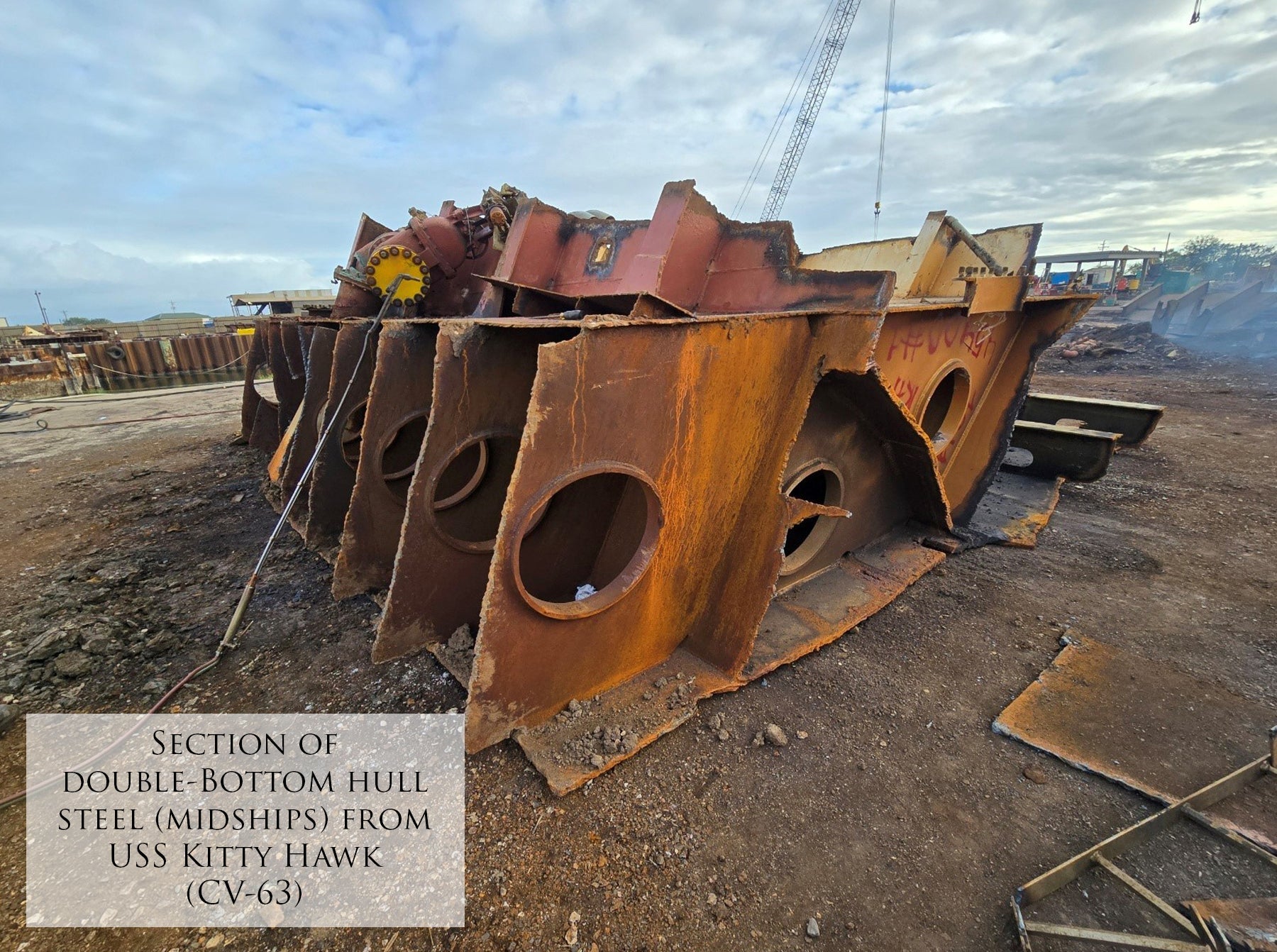This Fine Art Print by Artist Craig Tinder depicts the first flight of Space Shuttle Columbia as it rockets towards the heavens as the first "reusable" spacecraft. This Limited Edition Canvas Print includes a fragment from Columbia's (Orbital Vehicle #102 - OV-102) thermal insulation liner and includes an engraved Certificate of Authenticity.
Details About the RELIC:
This space flown fragment of thermal insulation liner flew on Orbital Vehicle #102 (OV-102) known as Space Shuttle Columbia. Made from beta cloth and kapton insulation, this piece of thermal insulation (part no. 362160-002-NC) lined and protected the payload bay area inside the shuttle.
 Thermal insulation liner from Space Shuttle Columbia - marked "SCRAP"
Thermal insulation liner from Space Shuttle Columbia - marked "SCRAP"
Often referred to as "the blanket", these insulation liners were frequently replaced when the payload within the orbiter was reconfigured to accomodate new items in the cargo bay. This specific insulation piece was flown on the first shuttle mission and likely remained on board through the first four missions during Columbia's R&D shuttle flight period.
 Top-side of relic
Top-side of relic
Once this liner was removed, it was marked as scrap in 1986. This item was part of the Charlie Bell (NASA) collection where he was employed at the Kennedy Space Center and amassed an incredible collection of surplus space program parts stemming from the early days of the Mercury, Gemini, Apollo, and Shuttle missions.

Bottom-side showing Kapton insulation
Artist Craig Tinder, validated the authenticity of this item directly with NASA and commenced with their approval for creating the art print.
 Serial/Parts Numbers for the specific piece
Serial/Parts Numbers for the specific piece
 STS-1 Relic as included on canvas art print
STS-1 Relic as included on canvas art print
The Story Behind the Print:
On 12 April 1981, the world witnessed the beginning of a revolutionary chapter in space exploration with the launch of the space shuttle Columbia. This mission, known as Space Transportation System-1 (STS-1), marked the first time a reusable spacecraft was launched into orbit and safely returned to Earth. Columbia lifted off from Launch Complex 39 at Kennedy Space Center, Florida, at exactly 10:12:00 GMT, with astronauts John Young and Robert Crippen aboard, heralding the start of NASA’s Space Shuttle Program.
 Space Shuttle Columbia prepares for launch at Cape Canaveral, FL. Notice the white fuel tank used on only the first 3 missions!
Space Shuttle Columbia prepares for launch at Cape Canaveral, FL. Notice the white fuel tank used on only the first 3 missions!
The primary goal of STS-1 was to test the shuttle’s systems, validate its reusability, and demonstrate the orbiter’s ability to safely enter orbit and return to Earth. Over the course of 54 hours, Columbia orbited the Earth 36 times, reaching speeds of over 17,500 miles per hour. It was a crucial test for the space shuttle’s complex systems, including its thermal protection tiles, flight controls, and onboard computers, all of which needed to function perfectly to ensure the vehicle’s safe re-entry into Earth’s atmosphere.
After completing its final orbit, Columbia re-entered the atmosphere on 14 April 1981, marking the first time a manned spacecraft returned from orbit to land like an airplane. Touching down on Runway 23 at Edwards Air Force Base in California, the successful mission proved that the shuttle could be reused for future missions, setting the stage for decades of space exploration. The landing was met with celebration as all of the shuttle's major systems were tested and verified successfully, cementing the shuttle’s role as the first reusable space vehicle in history.
 Space Shuttle Columbia (STS-1) prepares for landing
Space Shuttle Columbia (STS-1) prepares for landing
This fine art relic print has been authorized by NASA for sale to the general public
Learn more about The Evolution of Space Shuttle’s Tank Color for Engineering Pragmatism, Click Here
To purchase or see similar items, visit here.
Commissioned by Museums, Treasured by Collectors





Share:
Sky Warriors, the story behind "Return of the Wolf Gang"
Breaking Barrers, the story behind "The Bone"